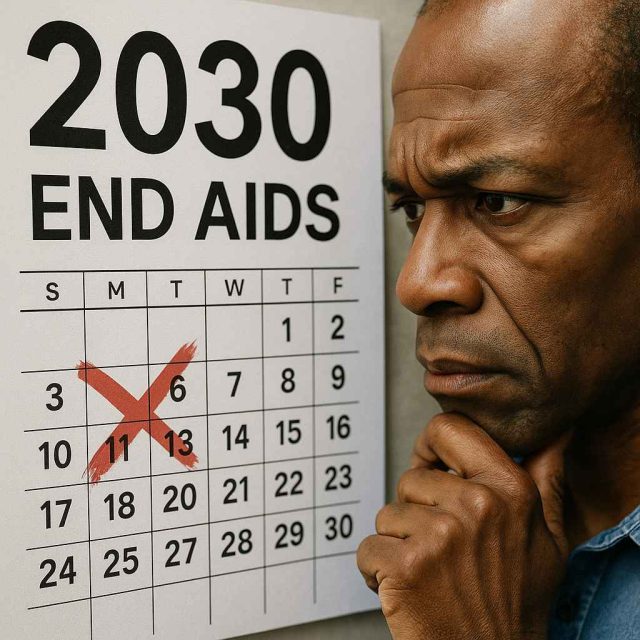In 2015, global health leaders committed to an ambitious goal: to end AIDS as a public health threat by 2030. It was a bold declaration rooted in hope, innovation, and years of progress. But with 2025 nearing its close, it’s becoming increasingly clear that the world is unlikely to meet this target. Despite dramatic strides in treatment and prevention, the structural, economic, and social barriers that fuel HIV transmission remain entrenched across much of the globe.
Table of Contents
- The Original 2030 Goal: What It Promised
- Why Ending AIDS Is Proving So Difficult
- The Populations Still Most at Risk
- Where Funding, Policy, and Strategy Must Shift
- Conclusion and FAQs
The Original 2030 Goal: What It Promised
The UNAIDS 90-90-90 framework, established in 2014, aimed for 90% of people living with HIV to be diagnosed, 90% of those diagnosed to be on treatment, and 90% of those treated to achieve viral suppression—all by 2020. This was envisioned as a stepping stone toward the larger mission to end AIDS by 2030.
Although many countries made progress, global targets were not fully met. As of 2023, only 76% of people living with HIV were aware of their status, according to UNAIDS. Just 71% were receiving treatment, and even fewer had suppressed viral loads. In some regions, particularly Sub-Saharan Africa, Central Asia, and parts of Latin America, health systems are still struggling with access, infrastructure, and outreach.
Technological advancements such as long-acting injectables like Cabenuva and PrEP medications like Descovy and Truvada have improved outcomes. However, the benefits of these breakthroughs have not been equitably distributed.
Why Ending AIDS Is Proving So Difficult
While medical science has outpaced expectations, societal and political barriers continue to stall progress. Stigma remains one of the most potent forces keeping people from testing or staying in care. In many communities, being diagnosed with HIV still leads to discrimination, job loss, or even violence.
Health disparities further complicate the situation. Low-income countries often depend heavily on donor funding for their HIV programs. As global priorities shift toward newer health threats like climate change and pandemic preparedness, HIV initiatives risk being deprioritized.
Even in high-income nations, systemic inequality prevents certain populations—especially LGBTQ+ people, immigrants, and racial minorities—from receiving consistent care. Lack of healthcare access, mistrust of medical institutions, and underinsurance all contribute to treatment gaps.
Moreover, political instability and war can decimate health infrastructure overnight. Conflict zones in Ukraine, Sudan, and Gaza, for example, have seen HIV programs disrupted, sometimes irreversibly.
The Populations Still Most at Risk
To truly end AIDS, strategies must focus on those left behind. Key populations include:
- Adolescent girls and young women in Sub-Saharan Africa, who account for over 60% of new infections in the region.
- Men who have sex with men, who remain disproportionately affected in nearly every country.
- Transgender individuals, many of whom lack access to gender-affirming care, let alone HIV services.
- People who inject drugs, especially in Eastern Europe and Asia, where harm reduction services are criminalized or unavailable.
- Sex workers, who often face harassment, legal penalties, and exclusion from healthcare.
According to the UNAIDS Global AIDS Update, these groups continue to experience rising infection rates in multiple countries, even as global averages decline.
Additionally, persistent underfunding of community-led initiatives weakens outreach and education programs that are critical for prevention. Without culturally competent services, many at-risk individuals will not seek help.
Where Funding, Policy, and Strategy Must Shift
If the world is to come close to the end AIDS goal—even beyond 2030—several priorities must be redefined:
1. Reinvigorate Political Will Governments must recommit to HIV policy frameworks and integrate them into broader health system reforms. HIV cannot be siloed; it must be embedded in universal health coverage, mental health, and primary care services.
2. Scale Equitable Access to Innovations Long-acting treatments, mobile health apps, and self-testing kits have the potential to revolutionize care. But only if they’re affordable and available to marginalized populations.
3. Expand Community-Based Programs Grassroots organizations often reach those whom formal systems cannot. Directing funds to local NGOs ensures better cultural alignment and trust.
4. Protect Human Rights Decriminalizing homosexuality, drug use, and sex work is essential for reducing transmission and improving care uptake. Countries must create environments where people can seek care without fear.
5. Invest in Next-Gen Research A functional cure and effective vaccine remain elusive. Global partnerships must continue investing in these long-term goals while improving current treatments.
A key part of this shift also includes combating misinformation. HIV myths continue to spread online, particularly in underserved regions. Accurate, accessible education campaigns are necessary to correct public misunderstandings.
For more resources and advocacy tools, visit aids.org’s mission page or browse our blog for stories from the field.
Conclusion and FAQs
Despite historic progress, the world is not on track to end AIDS by 2030. Deep-rooted inequalities, social stigma, funding gaps, and inconsistent policy enforcement have slowed momentum. However, this does not mean the goal should be abandoned—it means efforts must be redoubled with a focus on inclusivity, justice, and accessibility.
Frequently Asked Questions
Why was 2030 chosen as the target to end AIDS?
It was selected by UNAIDS and the UN as a milestone aligned with global sustainable development goals.
Are we making progress in the fight against AIDS?
Yes, particularly in treatment options and testing accessibility, but progress is uneven across regions and populations.
What countries are closest to achieving the goal?
Some nations like Switzerland, Rwanda, and Thailand have made impressive gains, though challenges remain.
Can AIDS actually be ended, or is it just a dream?
With political will, funding, and innovation, the end of AIDS as a public health threat is possible—even if not by 2030.
How can I help?
Support advocacy organizations, donate to trusted HIV programs, and use your voice to fight stigma.
This content is not medical advice. For any health issues, always consult a healthcare professional. In an emergency, call 911 or your local emergency services.
